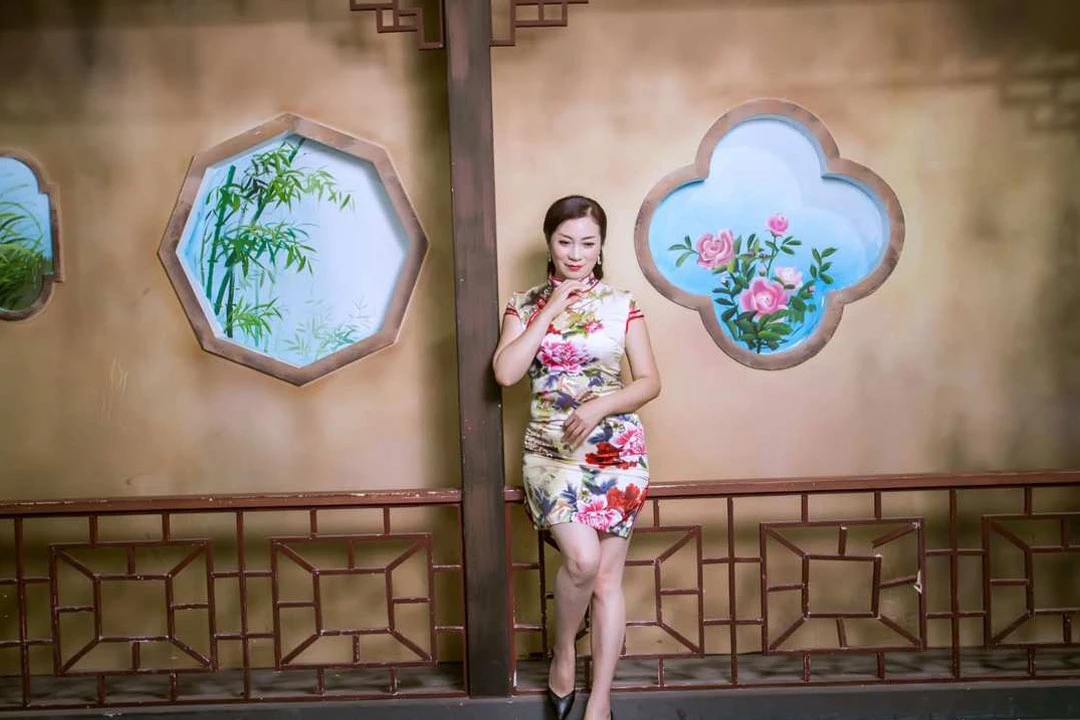From Imperial Robe to Fashion Icon: The Metamorphosis of the Qipao
In the tapestry of Chinese history, few garments have embodied the nation's cultural evolution as profoundly as the cheongsam, or qipao. This iconic dress, with its sleek silhouette and intricate designs, stands as a testament to China's tumultuous journey from imperial rule to modernity. Its transformation mirrors the country's own metamorphosis, reflecting changing social norms, political ideologies, and cultural values.
The story of the modern cheongsam begins in the aftermath of the 1911 Xinhai Revolution, a seismic event that toppled China's last imperial dynasty and ushered in a new era of social and political change. As the dust settled on centuries of feudal rule, the rigid dress codes that had long defined Chinese society began to unravel. The fall of the Qing Dynasty meant the end of mandated Manchu-style clothing, opening the floodgates for a sartorial revolution.
In the chaotic years following the revolution, China's fashion landscape became a vibrant patchwork of styles. Traditional Han clothing mingled with Western-inspired attire on the streets of major cities, reflecting the nation's struggle to reconcile its rich cultural heritage with the allure of modernization. It was in this crucible of change that the modern cheongsam began to take shape, shedding the voluminous layers of its imperial predecessor in favor of a more streamlined, practical design.
The birthplace of this new style was Shanghai, a cosmopolitan port city that had become China's de facto fashion capital. Here, at the intersection of East and West, the cheongsam evolved from a symbol of Manchu authority into an emblem of Chinese modernity. The city's unique blend of foreign influence and Chinese tradition created the perfect environment for sartorial innovation.
Shanghai's status as a hotbed of women's rights activism played a crucial role in the cheongsam's evolution. As female students and intellectuals pushed for greater social and political freedoms, they sought a style of dress that reflected their progressive ideals. The cheongsam, with its blend of modesty and elegance, became a canvas for these aspirations. It allowed women to assert their cultural identity while embracing a more modern silhouette.
The early iterations of the modern cheongsam were a far cry from the form-fitting dresses that would later capture the world's imagination. Initially appearing as a long vest worn over a short jacket, the garment gradually transformed into a one-piece dress with sleeves. This new design retained elements of traditional Chinese clothing while incorporating Western tailoring techniques, resulting in a uniquely hybrid style.
Threads of Change: How the Cheongsam Wove Together Tradition and Modernity
As the cheongsam gained popularity among students and intellectuals, it began to permeate other strata of society. Courtesans and socialites, always quick to adopt the latest trends, embraced the garment, further cementing its status as a symbol of sophistication and modernity. By the 1930s and 1940s, the cheongsam had become ubiquitous, worn by women from all walks of life.
This period marked the golden age of the cheongsam. Designers experimented with cuts, fabrics, and embellishments, pushing the boundaries of what the garment could be. The introduction of Western dressmaking techniques allowed for a more fitted silhouette, accentuating the female form in a way that was revolutionary for Chinese fashion. High collars, cap sleeves, and side slits became defining features, creating a look that was at once demure and daring.
The cheongsam's rise coincided with a broader cultural renaissance in China. As the country grappled with questions of national identity in the face of Western imperialism, the dress became a powerful symbol of Chinese modernity. It represented a bridge between tradition and progress, allowing women to honor their cultural heritage while embracing new ideas about femininity and self-expression.
However, the cheongsam's journey was not without controversy. Conservative elements in Chinese society criticized the garment for being too revealing, arguing that it undermined traditional values. Others saw it as a symbol of bourgeois decadence, at odds with the egalitarian ideals of the emerging communist movement. These tensions reflected the broader struggles facing Chinese society as it navigated the complexities of modernization.
Despite these challenges, the cheongsam's popularity continued to grow, reaching its zenith in the 1930s and 1940s. During this period, the dress became closely associated with the glamour of Shanghai's film industry, with movie stars and socialites showcasing ever more elaborate and daring designs. The cheongsam had evolved from a practical garment into a work of art, with skilled tailors and embroiderers pushing the boundaries of craftsmanship.
The cheongsam's influence extended beyond China's borders, captivating the imagination of the Western fashion world. International designers drew inspiration from its elegant lines and exotic allure, incorporating elements of the dress into their own collections. This cross-cultural exchange further cemented the cheongsam's status as a global fashion icon.
As we reflect on the cheongsam's journey from imperial robe to modern classic, we see a garment that has consistently adapted to the changing tides of history. It has served as a canvas for artistic expression, a symbol of cultural identity, and a tool for social and political statement. The cheongsam's enduring appeal lies in its ability to balance tradition and innovation, embodying the complexities of modern Chinese identity.
Today, the cheongsam continues to evolve, with contemporary designers reinterpreting its classic elements for a new generation. Whether worn as a statement piece at international red carpet events or as a nod to cultural heritage at weddings and festivals, the cheongsam remains a powerful symbol of Chinese fashion and identity.
The story of the cheongsam is, in many ways, the story of modern China itself - a tale of transformation, resilience, and the enduring power of cultural heritage. As China continues to navigate its place in the global community, the cheongsam stands as a reminder of the nation's ability to honor its past while embracing the future, one elegant stitch at a time.




Dear Jeanette, I am very interested in your article. Is it possible to leave you email address here so I can get in contact with you further.